Abstract
Therapeutic doses of corticosteroids frequently induce eosinopenia; however, the mechanism(s) involved remain obscure. To investigate this question, we studied the effects of corticosteroids on eosinophil adherence and migration. Eosinophils from normal donors were prepared by dextran sedimentation and Hypaque gradient centrifugation to 45-96% purity. Adherence was measured by filtration of whole blood and isolated eosinophils through nylon wool columns. Before prednisone administration, adherence was 83.8±3.2% for eosinophils in heparinized blood and 82.1±3.2% for isolated eosinophils. 4 h after oral prednisone administration whole blood eosinophil adherence was reduced to 53.9±10.7%; at 24 and 48 h adherence was normal. In contrast, isolated eosinophils showed no decrease in adherence 4, 24, or 48 h after corticosteroid administration. Similarly, in vitro addition of hydrocortisone to isolated eosinophils at 0.01 and 2.0 mg/ml did not reduce adherence. Eosinophil migration was tested in modified Boyden chambers by “lower-surface” and “leading-front” methods, using zymosan-activated serum and buffered saline to assess chemotactic and random migration, respectively. In vitro incubation of eosinophils with hydrocortisone or methylprednisolone produced a dose-dependent inhibition of chemotaxis. Using lower-surface methods the minimal concentration effecting substantial inhibition was 0.01 mg/ml for both drugs. At 2.0 mg/ml hydrocortisone and methylprednisolone inhibited eosinophil chemotaxis 82.6±4.4% and 85.0±3.5%, respectively. Using leading-front chemotaxis techniques significant inhibition was detected at 0.001 mg/ml hydrocortisone. Eosinophils incubated and washed free of corticosteroids responded normally to chemoattractants, indicating that the inhibitory effect of these drugs was reversible. Hydrocortisone at 2 mg/ml inhibited random eosinophil migration, although this effect was not apparent at lower concentrations. Corticosteroids did not act as chemotactic factor inactivators and were not toxic as measured by trypan blue exclusion. Eosinophils obtained from donors who had received 40 mg of prednisone orally for four days showed normal chemotactic responses, probably reflecting the fact that the cells were washed free of plasma before testing. In contrast, incubation of eosinophils in plasma from donors who had received a 300-mg bolus of hydrocortisone induced 46.1±4.5% more inhibition of chemotaxis than did incubation in normal plasma. These results indicate that: (a) eosinophil adherence is transiently reduced following in vivo corticosteroid administration, (b) eosinophil chemotaxis is inhibited by both in vitro and in vivo administration of corticosteroids, and (c) the chemotaxis inhibiting effect is nontoxic, cell-directed, dose-dependent and reversible. Inhibition of eosinophil adherence and chemotaxis may in part explain how corticosteroids produce eosinopenia and decrease the local accumulation of eosinophils.
Full text
PDF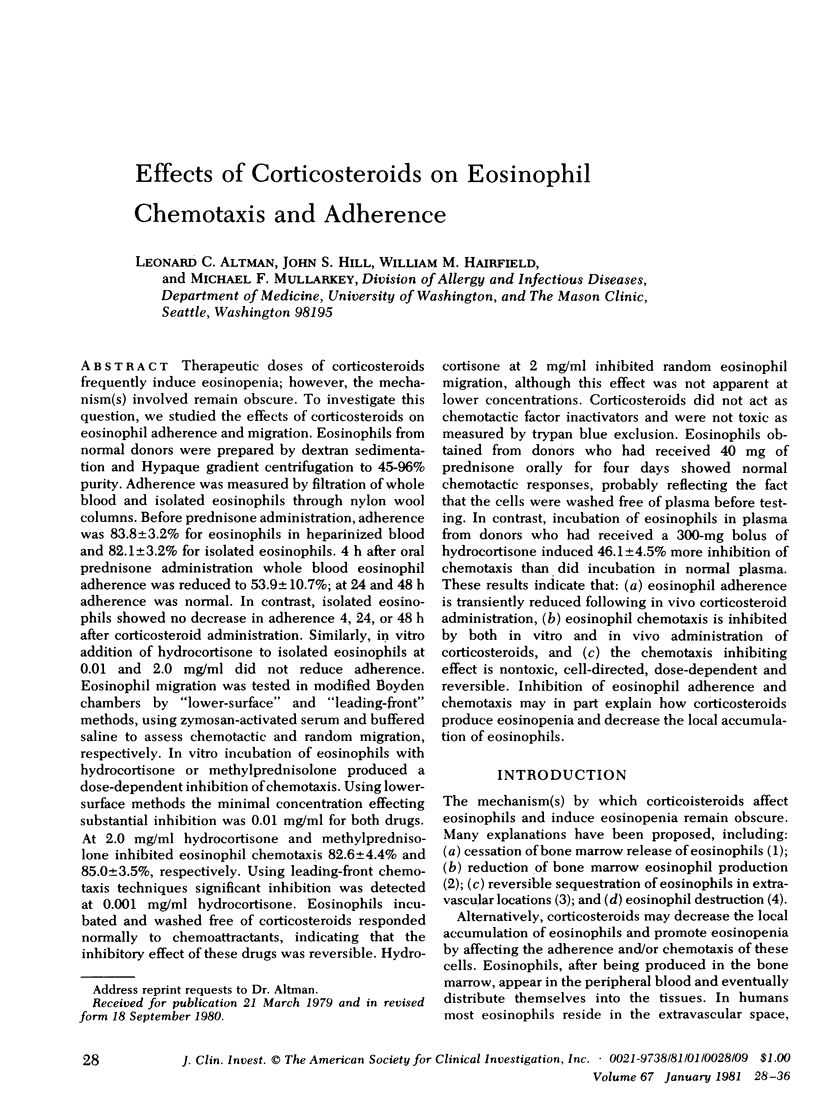
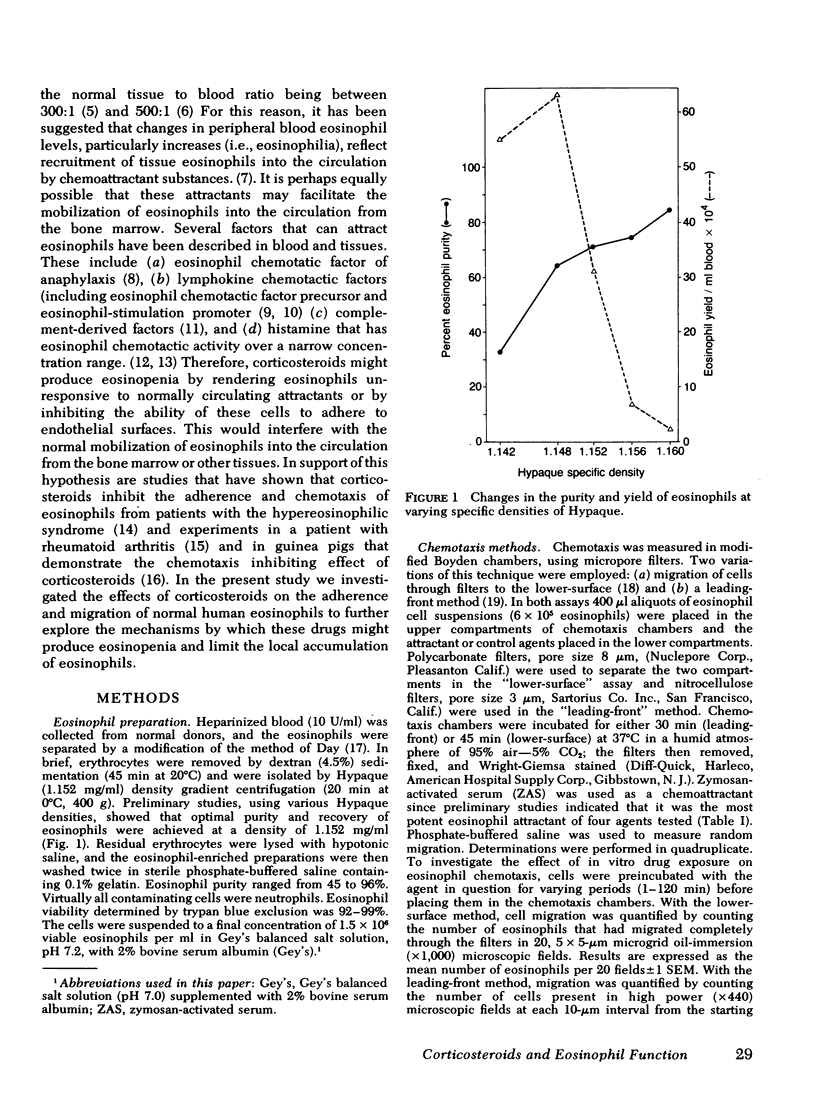
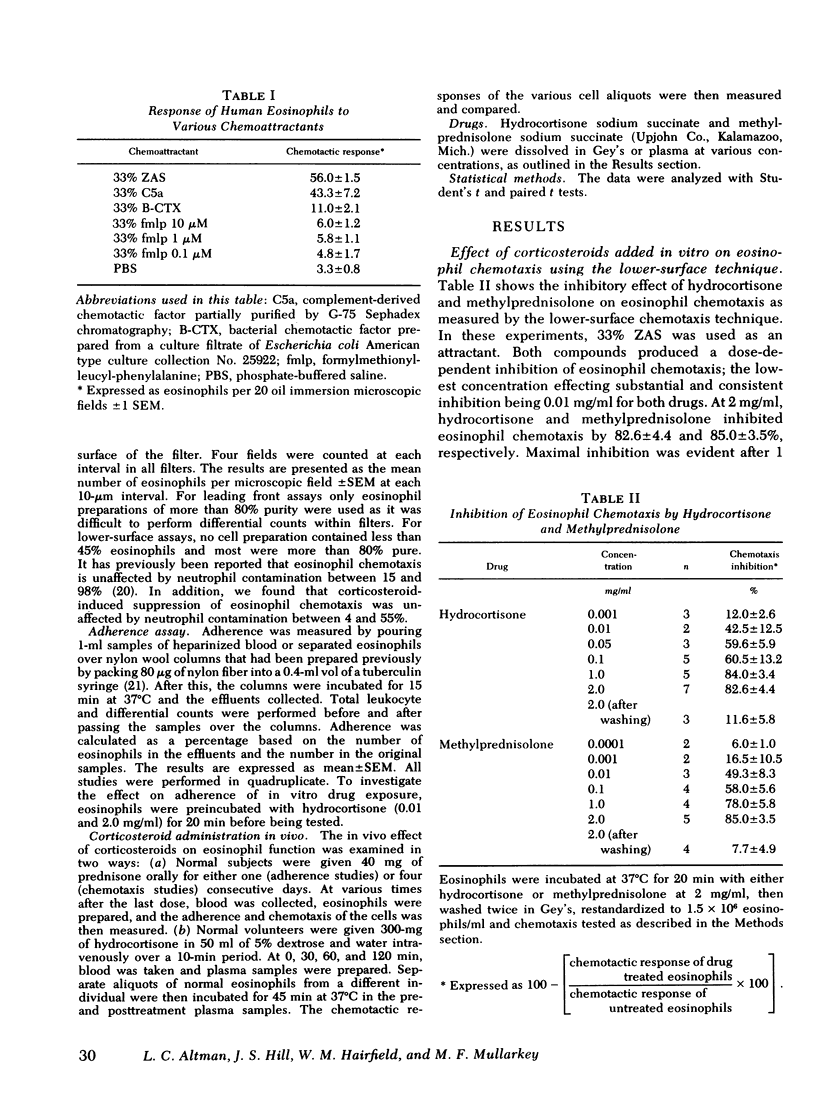
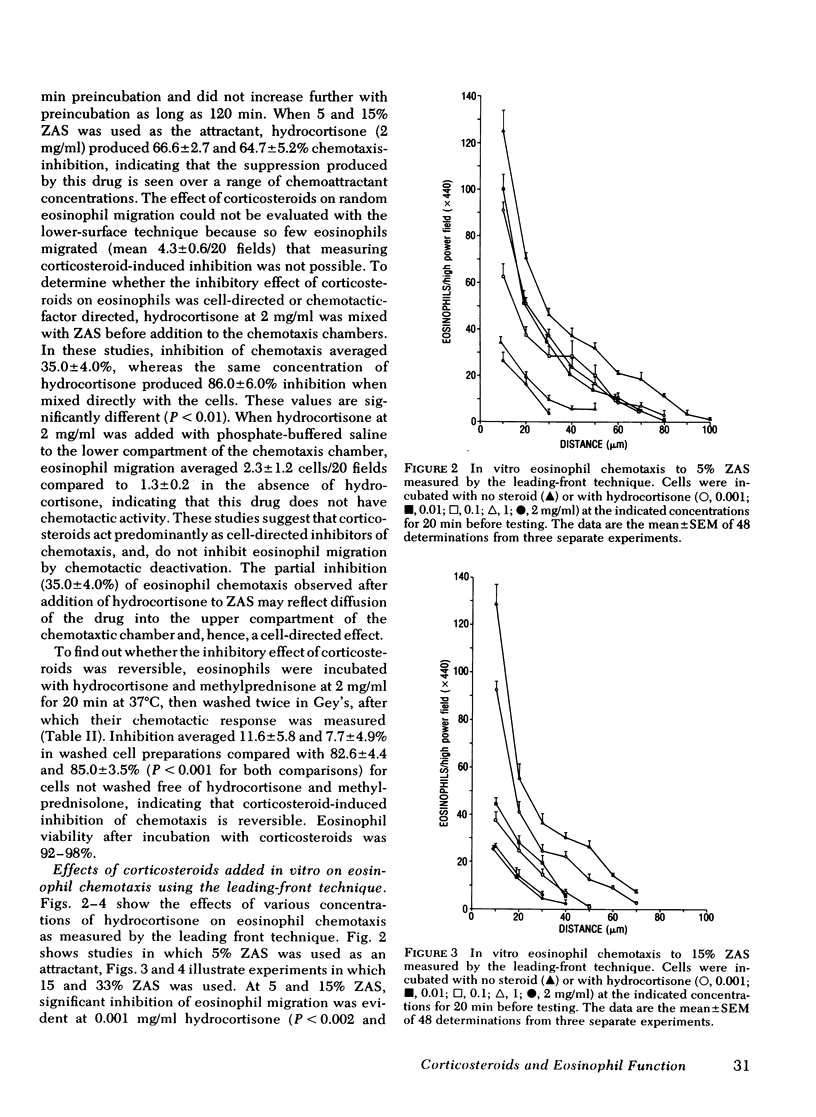
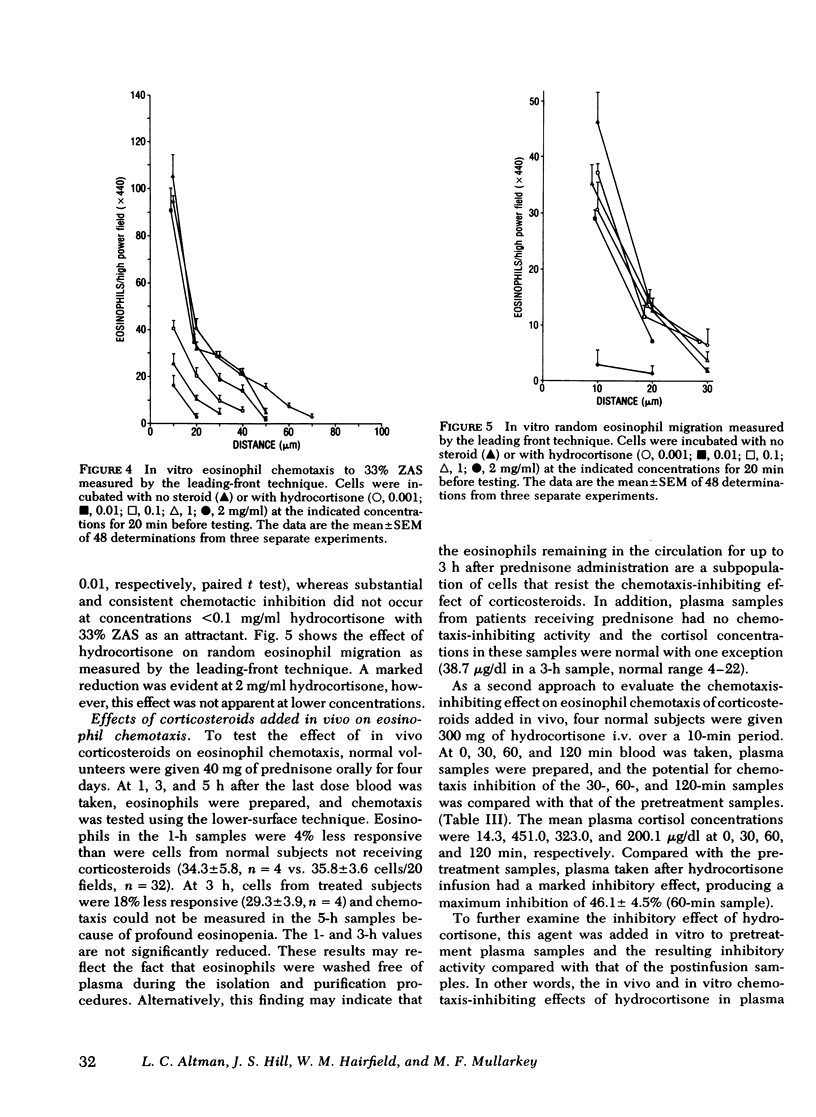
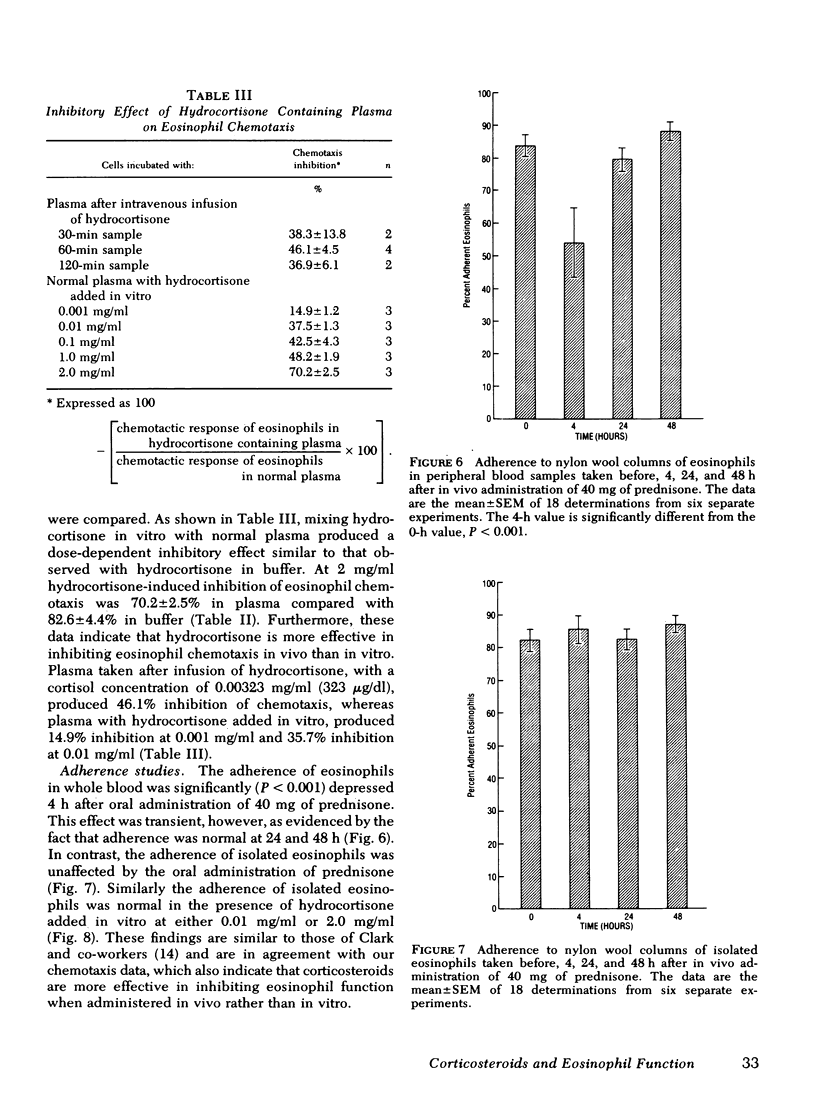
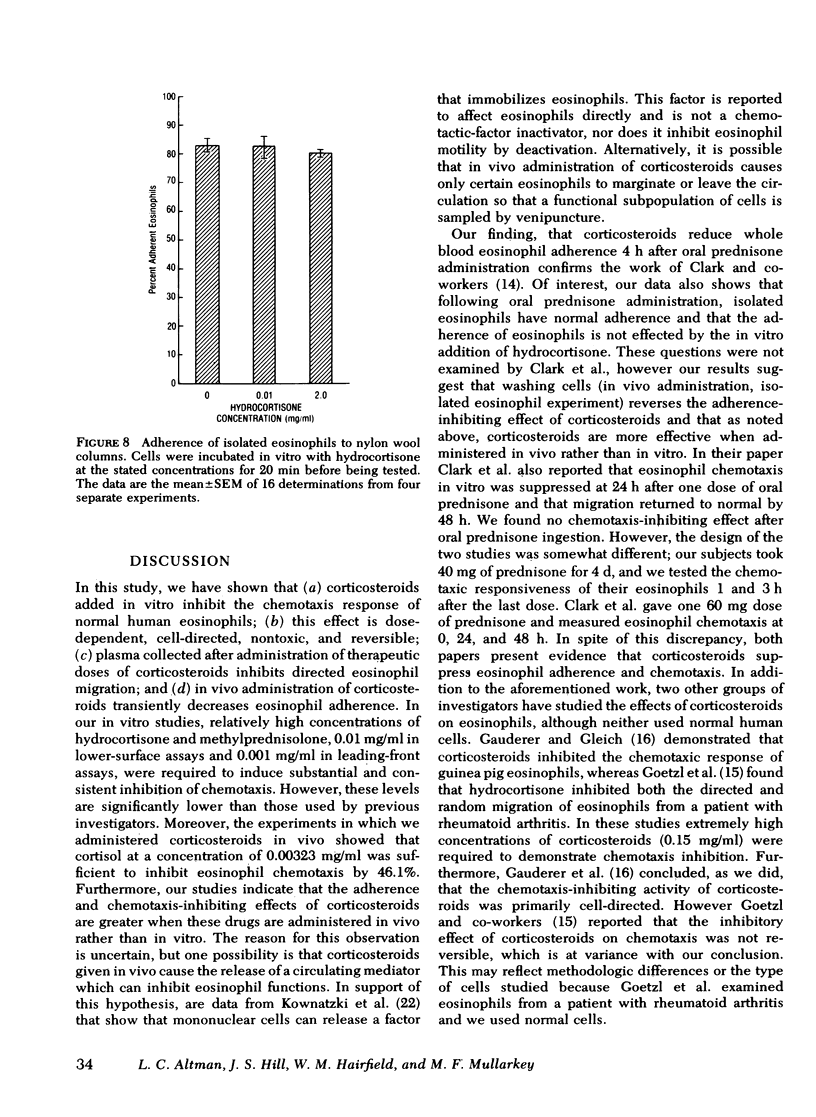
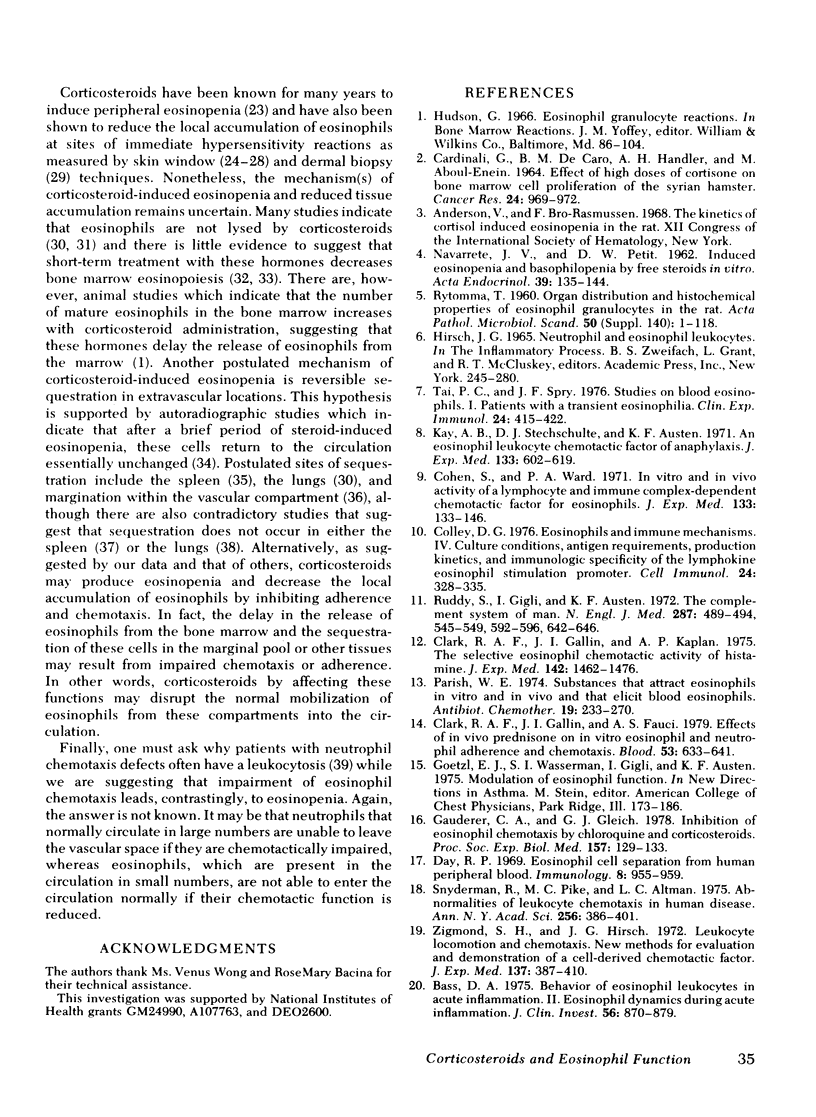
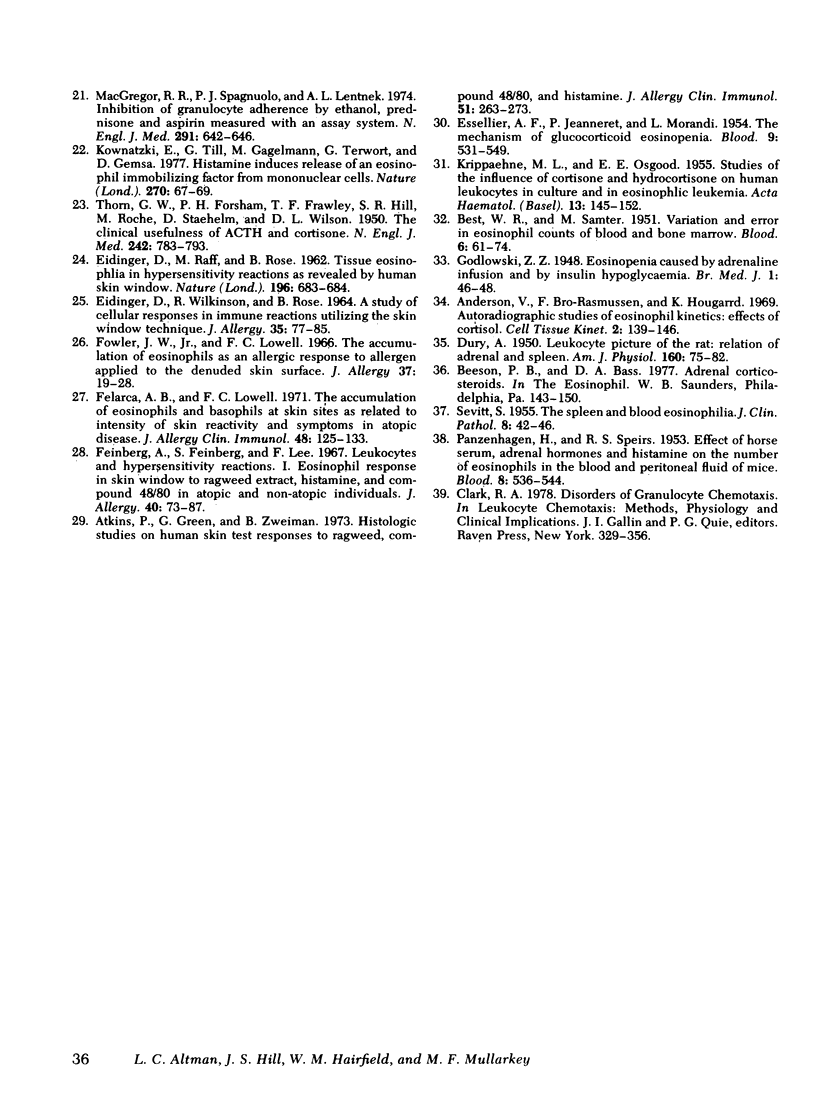
Selected References
These references are in PubMed. This may not be the complete list of references from this article.
- Atkins P., Green G. R., Zweiman B. Histologic studies of human skin test responses to ragweed, compound 48-80, and histamine. J Allergy Clin Immunol. 1973 May;51(5):263–273. doi: 10.1016/0091-6749(73)90128-0. [DOI] [PubMed] [Google Scholar]
- BEST W. R., SAMTER M. Variation and error in eosinophil counts of blood and bone marrow. Blood. 1951 Jan;6(1):61–74. [PubMed] [Google Scholar]
- Bass D. A. Behavior of eosinophil leukocytes in acute inflammation. II. Eosinophil dynamics during acute inflammation. J Clin Invest. 1975 Oct;56(4):870–879. doi: 10.1172/JCI108166. [DOI] [PMC free article] [PubMed] [Google Scholar]
- CARDINALI G., CARDINALI G., DECARO B. M., HANDLER A. H., ABOUL-ENEIN M. EFFECT OF HIGH DOSES OF CORTISONE ON BONE MARROW CELL PROLIFERATION IN THE SYRIAN HAMSTER. Cancer Res. 1964 Jul;24:969–972. [PubMed] [Google Scholar]
- Clark R. A., Gallin J. I., Fauci A. S. Effects of in vivo prednisone on in vitro eosinophil and neutrophil adherence and chemotaxis. Blood. 1979 Apr;53(4):633–641. [PubMed] [Google Scholar]
- Clark R. A., Gallin J. I., Kaplan A. P. The selective eosinophil chemotactic activity of histamine. J Exp Med. 1975 Dec 1;142(6):1462–1476. doi: 10.1084/jem.142.6.1462. [DOI] [PMC free article] [PubMed] [Google Scholar]
- Cohen S., Ward P. A. In vitro and in vivo activity of a lymphocyte and immune complex-dependent chemotactic factor for eosinophils. J Exp Med. 1971 Jan 1;133(1):133–146. doi: 10.1084/jem.133.1.133. [DOI] [PMC free article] [PubMed] [Google Scholar]
- Colley D. G. Eosinophils and immune mechanisms. IV. Culture conditions, antigen requirements, production kinetics and immunologic specificity of the lymphokine eosinophil stimulation promoter. Cell Immunol. 1976 Jun 15;24(2):328–335. doi: 10.1016/0008-8749(76)90216-1. [DOI] [PubMed] [Google Scholar]
- DURY A. Leucocyte picture of the rat; relation of adrenal and spleen. Am J Physiol. 1950 Jan;160(1):75–82. doi: 10.1152/ajplegacy.1949.160.1.75. [DOI] [PubMed] [Google Scholar]
- EIDINGER D., WILKINSON R., ROSE B. A STUDY OF CELLULAR RESPONSES IN IMMUNE REACTIONS UTILIZING THE SKIN WINDOW TECHNIQUE. I. IMMEDIATE HYPERSENSITIVITY REACTIONS. J Allergy. 1964 Jan-Feb;35:77–85. doi: 10.1016/0021-8707(64)90052-8. [DOI] [PubMed] [Google Scholar]
- ESSELLIER A. F., JEANNERET R. L., MORANDI L. The mechanism of glucocorticoid eosinopenia; contribution to the physiology of eosinophile granulocytes. Blood. 1954 May;9(5):531–549. [PubMed] [Google Scholar]
- Feinberg A. R., Feinberg S. M., Lee F. Leukocytes and hypersensitivity reactions. I. Eosinophil response in skin window to ragweed extract, histamine, and compound 48/80 in atopic and nonatopic individuals. J Allergy. 1967 Aug;40(2):73–87. doi: 10.1016/0021-8707(67)90100-1. [DOI] [PubMed] [Google Scholar]
- Felarca A. B., Lowell F. C. The accumulation of eosinophils and basophils at skin sites as related to intensity of skin reactivity and symptoms in atopic disease. J Allergy Clin Immunol. 1971 Sep;48(3):125–133. doi: 10.1016/0091-6749(71)90007-8. [DOI] [PubMed] [Google Scholar]
- Fowler J. W., 3rd, Lowell V. C. The accumulation of eosinophils as an allergic response to allergen applied to the denuded skin surface. J Allergy. 1966 Jan;37(1):19–28. doi: 10.1016/0021-8707(66)90106-7. [DOI] [PubMed] [Google Scholar]
- GODLOWSKI Z. Z. Eosinopenia caused by adrenaline infusion and by insulin hypoglycaemia. Br Med J. 1948 Jan 10;1(4540):46–48. doi: 10.1136/bmj.1.4540.46. [DOI] [PMC free article] [PubMed] [Google Scholar]
- Gauderer C. A., Gleich G. J. Inhibition of eosinophilotaxis by chloroquine and corticosteroids. Proc Soc Exp Biol Med. 1978 Jan;157(1):129–133. doi: 10.3181/00379727-157-40006. [DOI] [PubMed] [Google Scholar]
- KRIPPAEHNE M. L., OSGOOD E. E. Studies of the influence of cortisone and hydrocortisone of human leukocytes in culture and in eosinophilic leukemia. Acta Haematol. 1955 Mar;13(3):145–152. doi: 10.1159/000204934. [DOI] [PubMed] [Google Scholar]
- Kay A. B., Stechschulte D. J., Austen K. F. An eosinophil leukocyte chemotactic factor of anaphylaxis. J Exp Med. 1971 Mar 1;133(3):602–619. doi: 10.1084/jem.133.3.602. [DOI] [PMC free article] [PubMed] [Google Scholar]
- Kownatzki E., Till G., Gagelmann M., Terwort G., Gemsa D. Histamine induces release of an eosinophil immobilising factor from mononuclear cells. Nature. 1977 Nov 3;270(5632):67–69. doi: 10.1038/270067a0. [DOI] [PubMed] [Google Scholar]
- MacGregor R. R., Spagnuolo P. J., Lentnek A. L. Inhibition of granulocyte adherence by ethanol, prednisone, and aspirin, measured with an assay system. N Engl J Med. 1974 Sep 26;291(13):642–646. doi: 10.1056/NEJM197409262911302. [DOI] [PubMed] [Google Scholar]
- NAVARRETE J. V., PETIT D. W. Induced eosinopenia and basophilopenia by "free" steroids in vitro. Acta Endocrinol (Copenh) 1962 Jan;39:135–144. doi: 10.1530/acta.0.0390135. [DOI] [PubMed] [Google Scholar]
- PANZENHAGEN H., SPEIRS R. Effect of horse serum, adrenal hormones, and histamine on the number of eosinophils in the blood and peritoneal fluid of mice. Blood. 1953 Jun;8(6):536–544. [PubMed] [Google Scholar]
- Parish W. E. Substances that attract eosinophils in vitro and in vivo, and that elicit blood eosinophilia. Antibiot Chemother (1971) 1974;19:233–270. doi: 10.1159/000395434. [DOI] [PubMed] [Google Scholar]
- Ruddy S., Gigli I., Austen K. F. The complement system of man. I. N Engl J Med. 1972 Sep 7;287(10):489–495. doi: 10.1056/NEJM197209072871005. [DOI] [PubMed] [Google Scholar]
- SEVITT S. The spleen and blood eosinopenia. J Clin Pathol. 1955 Feb;8(1):42–46. doi: 10.1136/jcp.8.1.42. [DOI] [PMC free article] [PubMed] [Google Scholar]
- Snyderman R., Pike M. C., Altman L. C. Abnormalities of leukocyte chemotaxis in human disease. Ann N Y Acad Sci. 1975 Jun 13;256:386–401. doi: 10.1111/j.1749-6632.1975.tb36065.x. [DOI] [PubMed] [Google Scholar]
- THORN G. W., FORSHAM P. H., FRAWLEY T. F., HILL S. R., Jr, ROCHE M., STAEHELIN D., WILSON D. L. The clinical usefulness of ACTH and cortisone. N Engl J Med. 1950 May 18;242(20):783–793. doi: 10.1056/NEJM195005182422005. [DOI] [PubMed] [Google Scholar]
- Tai P. C., Spry C. J. Studies on blood eosinophils. I. Patients with a transient eosinophilia. Clin Exp Immunol. 1976 Jun;24(3):415–422. [PMC free article] [PubMed] [Google Scholar]
- Zigmond S. H., Hirsch J. G. Leukocyte locomotion and chemotaxis. New methods for evaluation, and demonstration of a cell-derived chemotactic factor. J Exp Med. 1973 Feb 1;137(2):387–410. doi: 10.1084/jem.137.2.387. [DOI] [PMC free article] [PubMed] [Google Scholar]


